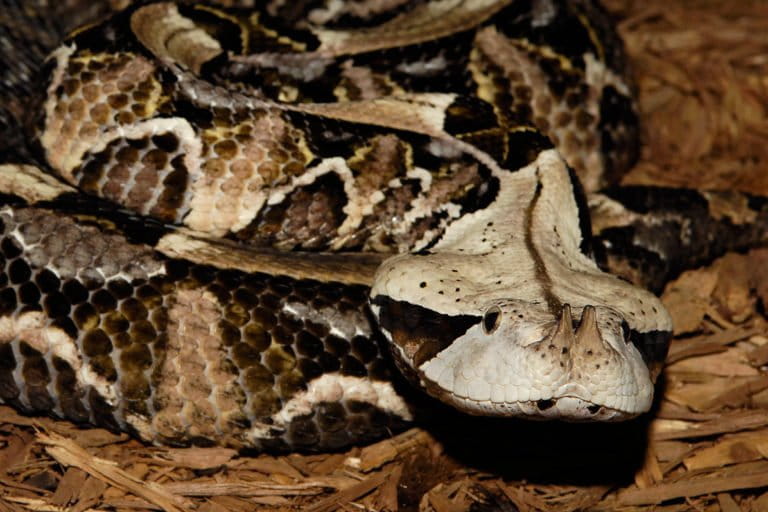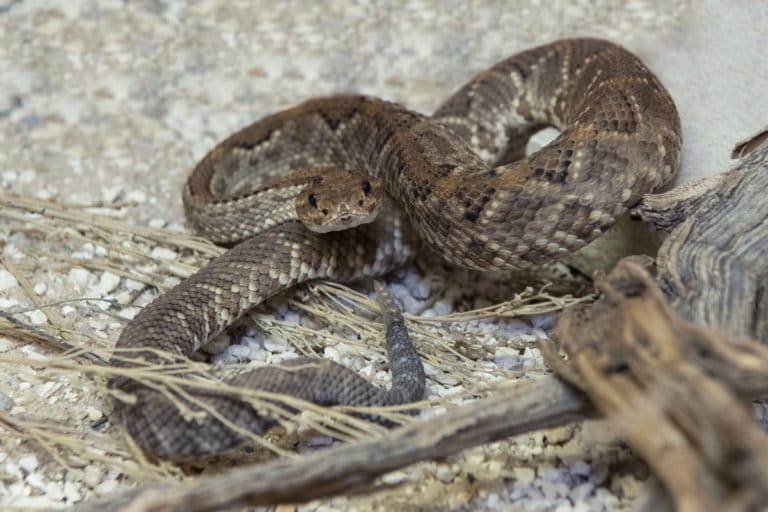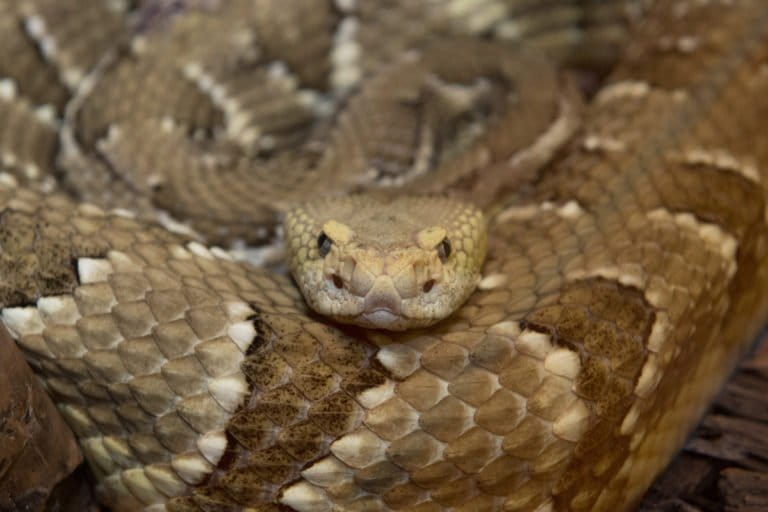- This photo post comes via Mongabay’s partnership with the Wildlife Conservation Society’s Wild View blog.
- Under this partnership, we publish occasional original contributions from Wild View that highlights an animal species or group.
- In this post, the Wildlife Conservation Society’s Herpetology Collection Manager Kevin Torregrosa writes about vipers.
- Photos by WCS Staff Photographer Julie Larsen Maher.


When many people think of snakes, they conjure up a vision of venomous serpents with huge fangs, large diamond-shaped heads, and cat-like eyes. The vision actually comes from the true-to-life physical appearance of vipers. This group of more than 300 species of snakes possess large heads that are distinct from the neck (diamond-shaped), the largest fangs of any of the venomous snakes, and elliptical pupils (cat-like). These characteristics may seem to play into an ophidiophobia nightmare, but in reality, they are important adaptations for this group of snakes’ place in their ecosystem. The shape of their head accommodates large venom glands used to incapacitate their prey. Their fangs are so large that they fold against the roof of their mouth when closed. These sizable fangs ensure that venom is delivered, and their food will not escape. Their elliptical pupils can dilate to allow more light in order to see better in the dark. Their features are perfectly designed for these ambush predators to lie in wait for the perfect opportunity to strike at unsuspecting prey animals.



Though all vipers share these features, this is a very diverse family of snakes. The family Viperidae consists of three subfamilies: Viperinae, Crotalinae, and Azemiopinae. The subfamily Viperinae comprises the true vipers and is represented by just more than 100 species. The true vipers are found throughout Europe, Africa, the Middle East, and Asia. One of the most iconic species in this group is the Gaboon viper from Africa. This viper holds the distinction of having the longest fangs of any snake at more than two inches in length. Crotalinae boasts the most species at more than 230. This subfamily, also known as the pit-vipers, is distinguished by the heat-detecting pit located between their eye and nostril. Found throughout the Americas and Asia, this group is also home to the rattlesnakes. The final subfamily, Azemiopinae, only contains two species; the Fea’s viper (Azemiops feae) and the white-head Burmese viper (Azemiops kharini) are both fossorial species from Southeast Asia. Among this family of snakes are the small Pygmy rattlesnake (Sistrurus milliarius) that is lucky to reach three feet as well as the bushmaster (Lachesis muta) which can reach lengths up to 10 feet.



The bushmaster is unique in that it is the only New World viper to lay eggs. The majority of vipers break the traditional mold of reptiles in that they are ovoviviparous; their eggs hatch internally, and they give birth to live snakes. Vipers fill almost every niche in the ecosystem: they are arboreal and terrestrial and come from swamps and lakes as well as deserts. They can be found in the heat of the Sahara as well as the cooler temperatures of Europe and Canada.
The vipers’ adaptations for survival may have given rise to generations of people with an irrational fear of snakes, however; these snakes hold no ill will to humans. They simply want to do what they have done for the last 60 million years. They want to survive.



WCS Wild View posts related to vipers.
Correction (4/10/2019), the original version of this story placed Santa Catalina “off the coast of California” when in fact it is located in the Gulf of California. We regret the error.
